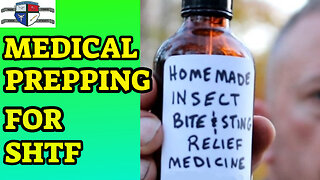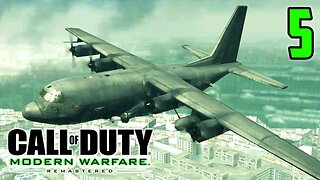A View Good Men (WHO Ordered the Code Red)
WHY WAS THE WIFE OF THE FIRST ACTIVE DUTY FATALITY GRANTED EMERGENCY LEAVE
In most of the stories regarding Chief Petty Officer Robert Charles Thacker, age 41, the first active duty fatality, there is included mention that his wife, Symantha, a fellow service member in the Navy, stationed in San Diego, was by his side at the time that he died.
The stories state that the family provided no comment, indicating that the statement was released by the Public Affairs Office (PAO) for Naval Base Guam.
Those familiar with emergency leave, especially in the U.S. Navy, are aware that it will provide transportation at government expense, often via military transport, and is not freely granted, raising the question regarding the conditions for which this grant of leave was approved.
Chief Petty Officer Thacker was identified as a infected on March 30, 2020, a pivotal day aboard the U.S.S. Theodore Roosevelt, because on that day, a request from Captain Brett Crozier to essentially abandon ship, leaving behind a skeleton crew of only about 500, for transport to Okinawa, at a time when he had less than 50 known infections aboard a ship upon which the medical officer had already declared an emergency out of control, and upon which Captain Crozier had made the command assessment that everyone on his vessel had been infected, negating the need for quarantine facilities. Chief Thacker and four others would be the only ones transferred to shore that day.
On March 30, 2020, Naval Base Guam also informed Captain Crozier that they had no more private room accommodations, and he rejected any other alternatives offered, effectively closing out Guam as an option, for the moment, until the decision to permit the sailors to be offloaded into private hotel rooms was arranged on April 2, 2020.
On March 25, 2020, two days after the first reported COVID-19 cases aboard he vessel, Captain Crozier had initiated his request to Naval Base Guam to secure two thousand private hotel rooms, which he believed was the "ideal" solution, from which he refused to back down, despite the fact that it would mean forcing the territorial government to reopen its economy, which had been locked down on March 15, 2020, which he conceded was a "political situation", which would require "a political solution.
On March 27, 2020, HHS Secretary Alex Azar had issued the declaration for the emergency use authorization to address a significant threat to national security, defined as members of the active duty military, only less than 93, to date, have been COVID-19 fatalities, in the active duty force, the reserve component and national guards, from a total force approaching 3 million, and citizens residing abroad. And, intriguingly, dependents, DoD civilians and contractors share the low vulnerability to adverse outcomes, with DoD contractors, far outside the active duty service member physical profile, having the lowest fatality risk.
On April 5, 2020, Chief Thacker celebrated his wedding anniversary, while separated from his spouse in San Diego, which would be an insufficient reason to grant emergency leave. However, also on that day, Chief Thacker developed some COVID-19 related medical emergency, requiring his transfer to the hospital, from where he was immediately released, and returned to his room, with no alteration in the regular check up visits by medical personnel once every 12 hours.
On April 9, 2020, on the routine check up visit, Chief Thacker was found in his private hotel room unresponsive and transferred back to the hospital.
By April 11, 2020, Chief Thacker's spouse was identified, contacted, and granted emergency leave for transport to Guam, where she arrived two days before his death to die by his side, indicating that at the time of his death, the command was fully aware that death had to be imminent.
Chief Thacker's death coincidentally corrected a problem with the paperwork for the emergency use authorization declaration, because, until his death, there were no active duty fatalities to substantiate a credible significant threat to national security, as defined in the declaration that was used to develop the vaccines.
-
 LIVE
LIVE
The Amber May Show
2 hours agoReAwaken America Tour Detroit, MI - DAY 2 | Join General Flynn, Eric Trump, Kash Patel, Mayor Giuliani & Team America + Request Tickets for October 18-19 Selma, NC At: TimeToFreeAmerica.com
633 watching -
 12:23
12:23
Freakin' Reviews
17 hours agoRice Robot Review: One-Touch Rice Cooker? | As Seen on TV
1.51K13 -
 5:45
5:45
Game Developer
20 hours agoHow To Become A Game Dev (While Working A Full Time Job)
4.42K4 -
 4:16
4:16
ryanhoguepassiveincome
1 day agoElevate Amazon Ads brand content with your Brand Store
4.79K2 -
 16:19
16:19
RealReaper
17 hours agoThe Acolyte Is Unwatchable
5.88K29 -
 11:29
11:29
Ethical Preparedness
12 hours ago2 EASY Ways: Make Insect Bite & Sting Medicine - Medical Prepping for SHTF - Natural Medicine
7.11K2 -
 15:52
15:52
JoBlo Horror Originals
23 hours agoThe Watchers Review: Shyamalans Sure Do Love Their Twists
4.15K1 -
 31:49
31:49
MichaelBisping
1 day agoBISPING & ANIK: Is Conor McGregor INJURED?! | Who Could Replace Him? | What's next for Poirier?
5.84K5 -
 16:00
16:00
Space Ice
18 hours ago'Resident Evil: Retribution' Is So Bad It's Like Looking Into A Mirror - Worst Movie Ever
6.88K13 -
 23:59
23:59
Degenerate Plays
14 hours agoThe Denny's Dictator Impresses Women - Call Of Duty Modern Warfare Remastered : Part 5
7K